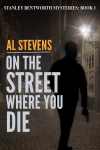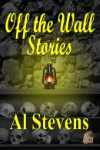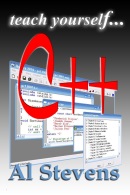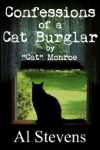E-books and eye candy
Following is an extract from a book I am working on about the mechanics of self-publishing. This is from the part about building e-books from a narrative manuscript. All this is, of course, subject to change and probably will. Paradigms shift, wisdom evolves, and my opinions change. But this is today...
An e-book is a compressed collection of text files encoded in the web languages called css and xhtml and organized into a structure of files suitable for rendering on e-reader devices. Two such formats—mobi and epub—prevail, and software exists to produce them. I hope that’s all you ever need to know about that.
You might, however, be instructed to hand-code your xhtml and css to achieve certain typesetting objectives with respect to line spacing, fonts, and so on.
First, unless you are a web designer, you probably don’t understand xhtml and css, and that in itself is a steep learning curve. Second, you are probably not trained in the art of typesetting, so, even if you know xhtml and css inside out, you don’t know what to change except perhaps to follow a few simple guidelines. Third, self-proclaimed experts’ opinions notwithstanding, it ain’t necessary. You can get sufficient e-book rendering from within your word processor's style features and the e-reader options to satisfy the typical reader.
(I routinely adjust html exports from word processors to override default first-line indent for chapter and scene opening paragraphs. It's a ten-second patch. Anything beyond that would be a waste of time.)
If you are curious about and want to learn typesetting and website languages, I encourage you to take the plunge. They are fascinating studies, at least for us gear-heads, but figure on devoting a huge slice of your time to those studies, time that might be better spent writing a sequel to your book.
...
E-reader devices use different rendering conventions, vendors announce new models at least annually, and new e-reader devices are being announced with regularity. To keep up with the differences and to have unique encoding for each device is not only a waste of time, it is error-prone and futile. Nothing holds still long enough. Use the default generic settings of the two formats you build (mobi and epub), and let the human readers and their e-reader devices manage how the books are rendered.
The computer can do most of the job. It might not be perfect, but it is acceptable, and your readership won’t know the difference. Witness the bazillion e-books being read that way with no complaints.
The myth is that only an experienced professional typographer can do it right. Pay no attention to that man behind the curtain...
An e-book is a compressed collection of text files encoded in the web languages called css and xhtml and organized into a structure of files suitable for rendering on e-reader devices. Two such formats—mobi and epub—prevail, and software exists to produce them. I hope that’s all you ever need to know about that.
You might, however, be instructed to hand-code your xhtml and css to achieve certain typesetting objectives with respect to line spacing, fonts, and so on.
First, unless you are a web designer, you probably don’t understand xhtml and css, and that in itself is a steep learning curve. Second, you are probably not trained in the art of typesetting, so, even if you know xhtml and css inside out, you don’t know what to change except perhaps to follow a few simple guidelines. Third, self-proclaimed experts’ opinions notwithstanding, it ain’t necessary. You can get sufficient e-book rendering from within your word processor's style features and the e-reader options to satisfy the typical reader.
(I routinely adjust html exports from word processors to override default first-line indent for chapter and scene opening paragraphs. It's a ten-second patch. Anything beyond that would be a waste of time.)
If you are curious about and want to learn typesetting and website languages, I encourage you to take the plunge. They are fascinating studies, at least for us gear-heads, but figure on devoting a huge slice of your time to those studies, time that might be better spent writing a sequel to your book.
...
E-reader devices use different rendering conventions, vendors announce new models at least annually, and new e-reader devices are being announced with regularity. To keep up with the differences and to have unique encoding for each device is not only a waste of time, it is error-prone and futile. Nothing holds still long enough. Use the default generic settings of the two formats you build (mobi and epub), and let the human readers and their e-reader devices manage how the books are rendered.
The computer can do most of the job. It might not be perfect, but it is acceptable, and your readership won’t know the difference. Witness the bazillion e-books being read that way with no complaints.
The myth is that only an experienced professional typographer can do it right. Pay no attention to that man behind the curtain...










0 Comments:
Post a Comment
Subscribe to Post Comments [Atom]
<< Home